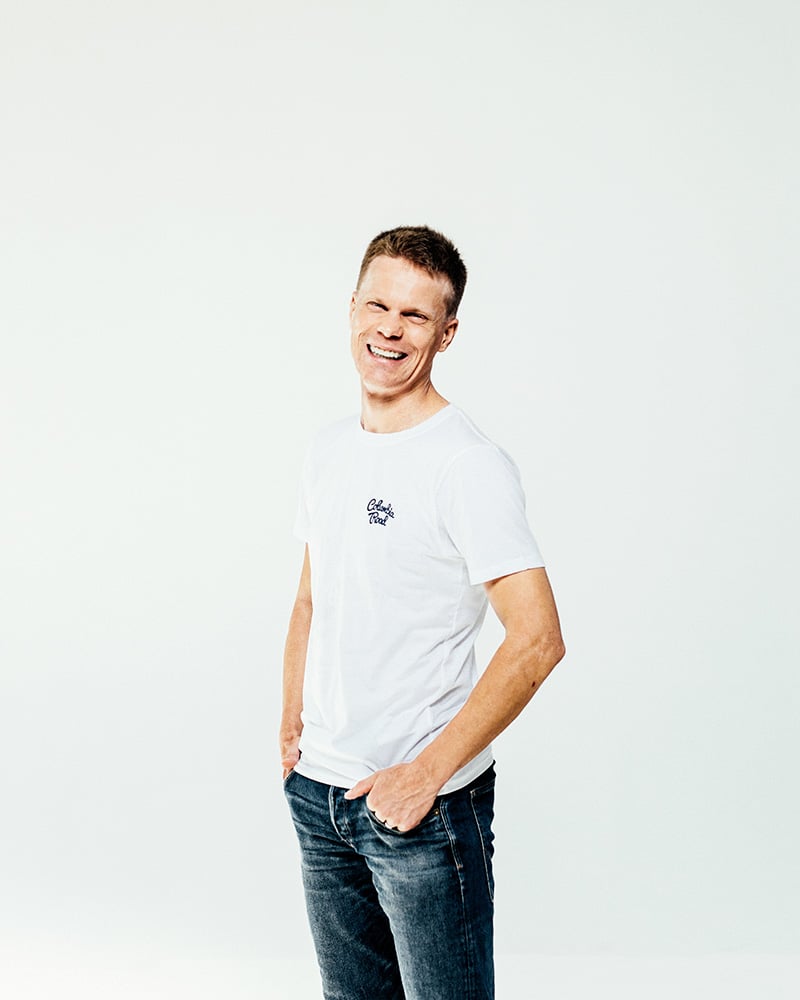The Data Handbook
How to use data to improve your customer journey and get better business outcomes in digital sales. Interviews, use cases, and deep-dives.
Get the bookWhat will be the top challenge for your business in one year? What will be your top digital sales channel in two years? How much data will you be responsible for in three years? There is only one feasible answer: “It depends”. And it is typical to examine only one aspect of it.
Day-to-day realities seldom allow exploring the dependency trees with sufficient depth. However, there are situations where a systematic approach to all visible possibilities merits focus and energy. Done right, it is possible to create adaptive solutions that can be scaled up or down depending on the situation.
No guess of the future is perfect. Which is why there are many benefits in considering alternative possibilities and responses. These alternative futures are more commonly called scenarios. Scenario-based strategy planning is a powerful tool especially in creating compelling visions to act towards.

Look back in order to be able to handle the future
Many business methods are adaptations of classic methods used by military intelligence. Shell made scenario planning famous in the 1970s. It’s a famous story that is often told to students studying related subjects. According to the story, Shell management had considered the possibility of an oil crisis and had outlined a coarse plan of action on how to handle it. It was considered highly unlikely at the time. When an oil crisis did happen in the 1970s, Shell deployed its resources successfully. They were able to change their operations rapidly in an environment that was a surprise to many. As a consequence, they enjoyed a vastly improved market position for a long period.
Scenarios aim to improve decision making
As always with legends, some doubt has been cast on how much scenarios actually influenced decision making at Shell. Nevertheless, today, Shell is famous for using scenarios in business. The company has made scenario planning somewhat of a trademark – Shell talks about scenario teams helping generations of leaders to explore ways forward, helping them to make better decisions.
Asking “what if” questions makes Shell consider events that may only feel remote possibilities. It is said to be a wonderful exercise for stretching your thinking. It should also be noted that Shell does not treat their scenarios as predictions. They formulate them as stories that describe potential future worlds. One of the obvious benefits is that it does not lock thinking into forecasting or guesstimating things. Imagination is key.
I have a relatively long track record in strategy and related long term planning. How Shell expresses what their scenario team does fills me with excitement. It’s exactly the kind of intellectual rush that originally drew me into this area of business. The danger in considering alternative futures, deep focus, and dedicated time – for me, it is a mental siren song. It might end up being just another conceptual exercise without creating anything that is even remotely actionable. At the same time, done right, it can produce things that are exceedingly concrete and bring competitive advantage for years to come.
Ground your thinking in reality
A successful scenario exercise requires involving the right people in it. After all, the goal is to improve organisation capabilities. The core team can be top management, but then the data should ideally come from all parts of the organisation. People should see their day-to-day reality reflected in the results. At best, they should feel the pride of ownership when it comes to scenarios and the vision related to them. At a minimum, they should recognise the language used in communicating the results. The whole idea is to create a shared understanding between parties. This understanding has no value in case it does not include contradictory views, conflicting aspirations, and numerous viewpoints that help the organisation to shape its future.
Scenarios become tangible when they are tied to events that lead to them. Methodologically it makes little difference whether the work starts from scenarios or events – events are the building blocks that scenarios are founded on. Iterations on what belongs where and what is relevant are typically needed in order to reach a satisfying view. Ideally, the events represent ongoing trends, cycles, and few surprises. This is where industry expertise is integrated with an external view.
Scenarios themselves are based on chains of events that lead to an outcome. This outcome is then described as a compelling, visual story. For each scenario, we must ask then: “What is the consequence to our business and what should we do then?” The topics are typically related to product and service portfolio, channels, organisation, culture, digital capabilities, competitors, vendors, competitive landscape, and society. The list is endless. The good news is that with a systematic approach, the irrelevant ones are weeded out typically quite promptly. And yes, some room must be left for the imagination to run wild. It is also an exercise in creativity.
No one size fits all
The resulting plans for scenarios can then take many forms. On a high level, they can be capability heat maps that represent capability needs for different cases. It can also be something as concrete as a project or a program plan.
At Columbia Road, we have even created different customer journeys for different scenarios, and outlined corresponding viewpoints to enterprise architecture. By making the narrative highly concrete through plans, the discussion around the events and their consequences is often heated. Seeing options and what kind of investments are needed to realise them is a completely different game compared to a one-sided narrow view to a hazy future.
There is little point in going into too much detail. We must keep in mind that the scenarios are descriptions of potential futures. It is highly unlikely that any chain of events will take place exactly as outlined. More likely it will be a combination of some events and elements that were decided not to be relevant or not seen at all. Sometimes you get most of it wrong. Nevertheless, I have never been in a situation where a properly conducted scenario planning would have been a complete waste. There is always an angle that makes people smarter and better prepared for the future. A vision that is articulated as a result of considering the scenarios is a much more powerful one. The homework has been done.
Creating the future by first thinking and then acting
With a shared understanding, the participants are more capable of managing their business together. They know which events lead to positive scenarios and are able to act in a way that increases the likelihood of these events. On the other hand, they are able to avoid the events that lead to negative scenarios. They might also get ideas for wise actions regardless of what might happen.
Learn how to thrive at the turning point of digital sales by reading The Digital Sales Transformation Handbook. Discover how digital sales transformation is changing companies, and how your business can leverage this change through organisational development, customer experience, ways-of-working and technology. Featuring interviews with industry experts, such as Marta Dalton (eCommerce Director for Unilever and Coca-Cola previously), Risto Siilasmaa (Founder of F-Secure) and Antti Kleemola (CDO of VR, Finnish Railways).
The Data Handbook
How to use data to improve your customer journey and get better business outcomes in digital sales. Interviews, use cases, and deep-dives.
Get the book




